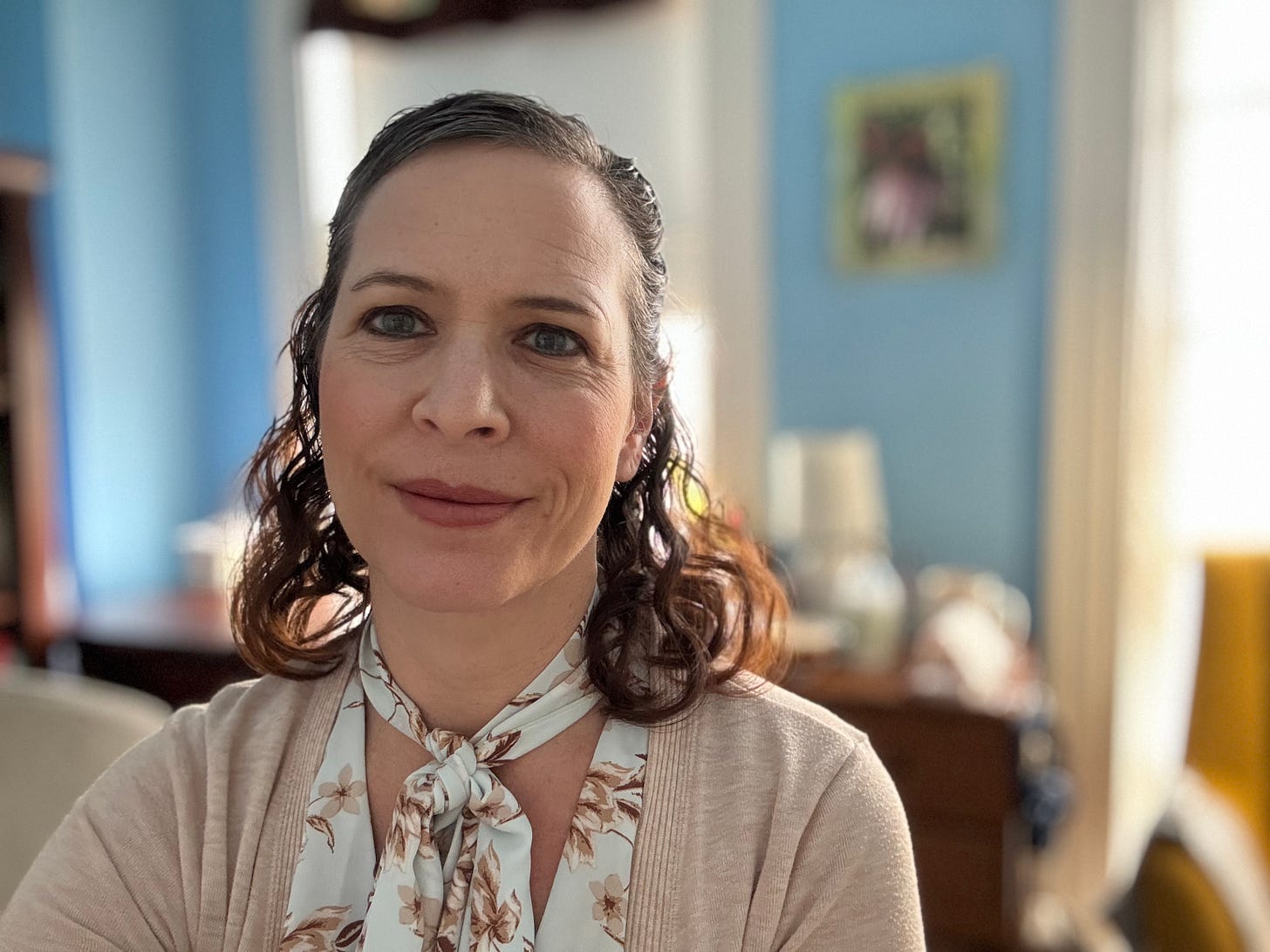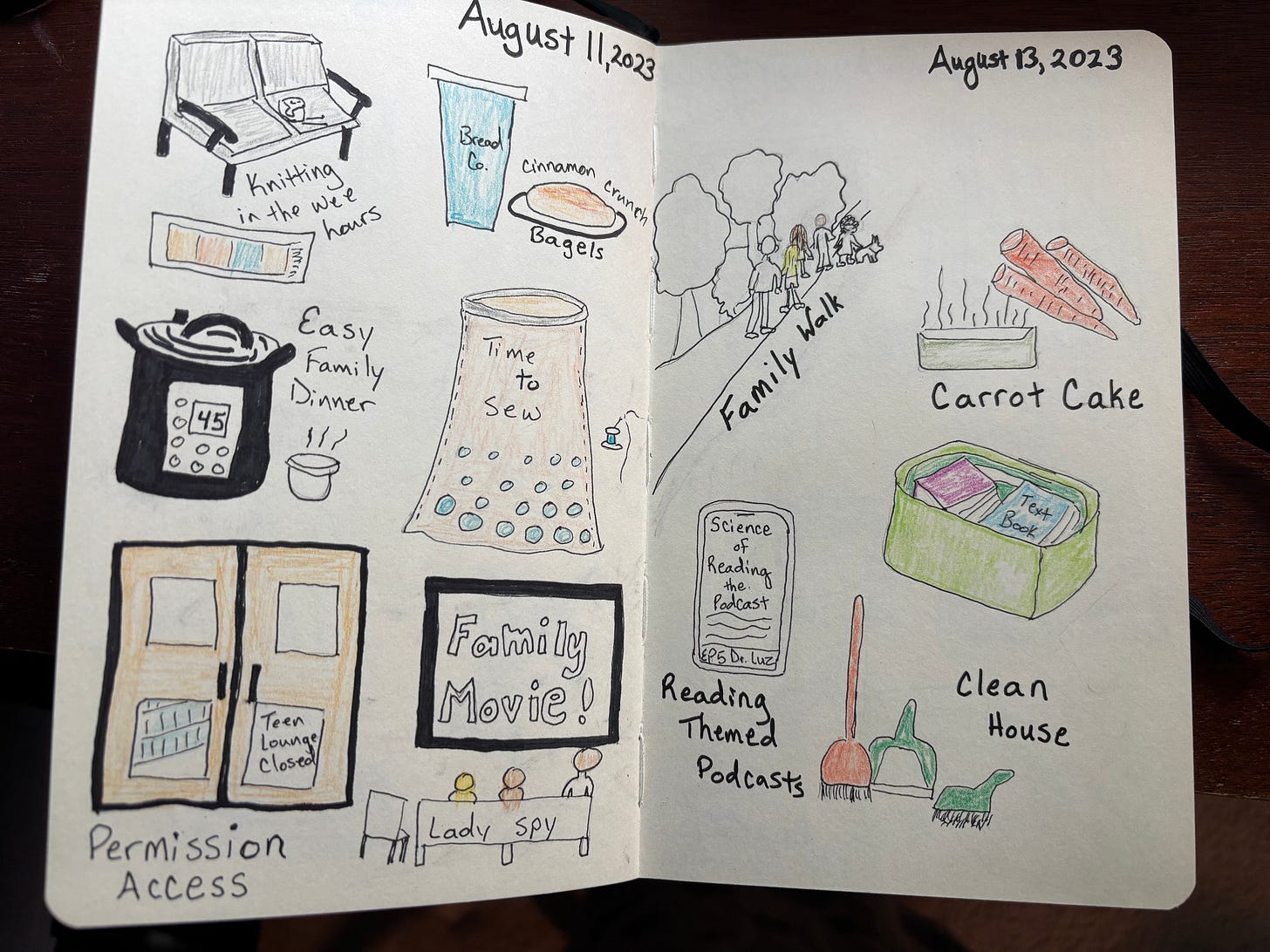Moving Forward: Taking Action, Being Optimistic, and Practicing Reflection in Midlife Transitions
FACTOR method part 2 (TOR)
Picking up where we left off (see Permission to Feel post for part 1)
In the previous post, I introduced the first three steps in the FACTOR model; a process intended to support women in the midlife transition stage of adult development. The model begins with feel (F) as many women in their mid-late forties, fifties, and early sixties often express a disconnect from their own emotions and feelings. Next, accept (A) involves understanding what is and is not fully in our control to change in the present time. Accepting one’s starting place is important as it helps set realistic expectations and goals. Why is this important? When you have realistic goals, you will more likely achieve them and this builds momentum toward larger changes and transitions. Finally, I talked through the importance of engaging in creative practices (enter Sketch and Stitch), and how these practices help provide new insights and promote innovative problem solving. Now, we are ready for more actionable steps. Let’s get moving!
Take Action: From Insight to Movement
Acupuncture. The first step in my healing journey during my midlife transition was making an appointment to have acupuncture. I suffer from carpal tunnel and a colleague suggested that I try acupuncture to relieve my symptoms, which had become very pronounced. I made an appointment and had to do so in the middle of a work day due to lack of childcare options after work. I lay on the table under a sheet, soft music playing in the background, and the lights dimmed. After the needles were inserted, I was left to lay there while they worked their magic - in the darkened quiet room. Warm. Safe. Full of gratitude. IT. WAS. BLISS!
It was the first time in a very long time that I quietly thanked myself; for the time, the gift, the care. I could share the many benefits acupuncture continues to provide for me, but the significance in this part of my story is that small action was all it took to keep me looking forward toward ways to look out for myself. Not because I was selfish, but because I had forgotten how. No, to be honest, I actually started to feel that I didn’t deserve the care or that care was something I could only give at that time in my life. I felt so guilty about it for a long time. A very long time. But, it worked and I was a better me after every appointment and others could see and feel it, too. It wasn’t just that my symptoms improved, the magic was in the new way I felt about myself. Rather than look to outside sources for validation and worthiness, I started cultivating my own confidence and courage to take up space in this world again.
How many times have you felt change was needed, but either didn’t know how to start or felt defeated before you got close to a solution? Did you consider a step, but talk yourself out of it almost immediately because it felt too selfish, silly, or you worried what others would think?
I know this feeling intimately. When I first recognized I needed to make changes in my life, I spent months—honestly, more like years—thinking, planning, and researching without actually doing anything tangible. It's as if the contemplation itself became a substitute for action, giving me the comforting illusion of progress without the vulnerability of actual change.
Many women in midlife get stuck in this contemplation phase. We've become so accustomed to putting everyone else first that taking concrete action for ourselves feels almost rebellious. We create elaborate plans that require perfect circumstances that never quite arrive. We wait for permission that no one is going to give us.
When we take even a tiny action—scheduling that appointment, signing up for that class, writing that first paragraph—something shifts inside us. Each small step creates momentum that makes the next step easier.
"Take the first step in faith. You don’t have to see the whole staircase, just take the first step..." Dr. Martin Luther King, Jr.
Simple Take Action Practice (Sketch)
Simple sketching practices support our ability to take action by making abstract ideas visible and concrete. When we draw, our brains create visual connections that bypass our verbal reasoning—the part of our mind that often talks us out of action with doubts and fears. This visual thinking activates different neural pathways than writing or thinking alone. I discovered this power of sketching almost by accident. Though I would never consider myself skilled at drawing, I took an online class focused on gratitude journaling. I learned how to draw simple sketches that represented five events, things, etc. that I was grateful for every day. The most surprising aspect of that practice, was the detail and clarity with which I could recall each sketch. With a glance at just a few images on the page, I remembered much more about my day weeks later than simply written journal entries.
The process of putting pencil to paper creates a bridge between our internal world and external reality. Research shows that visual thinking activates our right brain—the intuitive, pattern-recognizing part of our mind that often holds solutions our logical left brain can't access. When we sketch, we produce a mild state of focused attention similar to meditation, which reduces anxiety and creates mental space for new possibilities. I've found that even the simplest sketches—stick figures, basic shapes, or mind maps—can break through the blocks I have caused by anxiety. Our visual mind knows what our thinking mind sometimes can't articulate.
Optimism: Sustaining Movement Through Setbacks
Taking action in little steps does support momentum toward larger goals, but if I led you to believe that is all it took, I would be doing you a terrible disservice. There are always setbacks and there will always be a chance that something won’t work out the way we want it to. It is in those moments, though, that we gain strength, determination, and build trust in ourselves. Let’s be honest here. The biggest obstacle isn’t always about finding the step or being creative in the solution. Often, we know what will move us forward. We hesitate because we are afraid and don’t always know if we will be successful. When we take that first step, it feels good and encourages us to continue, but what will happen when the new wears off, the success is a little less than what we expected, or we simply get tired? Progress isn’t just in the action toward the solution, we need to show up for ourselves and build faith in our capacity to change. If we can support ourselves through the setbacks, we gain more than the bigger change we seek. We gain faith in ourselves.
It is important to note the difference between being positive and being optimistic. In research, I encountered the terms “toxic positivity” and “grounded optimism,” which I believe can help us distinguish between the two. Toxic positivity dismisses negativity and pushes us to “just think positively” and in doing so everything will work out just fine. Alternatively, grounded optimism is just that - a positive outlook, while recognizing our struggles. It means retaining hope and faith while embracing the struggle. You can tell yourself, “this is hard, but I believe in myself and I can struggle through.”
Simple Optimism Practices (Stitch)
Little stitching/sewing practices and projects support resilience. When we work with textiles, our brains release dopamine during the anticipation and completion of each small stitch or section. This simple process creates reward cycles that motivate. For the longest time, I thought I simply enjoyed sewing and creating. But, during my most challenging moments and times of burnout, I felt such a strong urge, a NEED to knit or sew. It was such a necessary practice that, if I didn’t even have a few minutes to knit or sew I ended the day feeling resentful and bitter.
The rhythmic, repetitive nature of textile work stimulates serotonin production—our body's natural mood stabilizer—while simultaneously reducing cortisol levels associated with stress. This neurochemical cocktail creates what scientists call "flow state," a condition of focused creative engagement that research shows significantly improves emotional regulation. Without knowing it or naming it fully, I was seekig emotional regulation. Additionally, the tactile stimulation of working with fibers activates multiple sensory pathways in the brain, creating new neural connections that enhance cognitive flexibility—a key component of resilience that helps us adapt to changes and challenges. Our bodies know what our minds sometimes forget: that creating with our hands literally builds our capacity to work through some of our biggest challenges.
The Power of Structured Reflection
In my doctoral courses, I learned the value of reflection with intention rather than informal “rumination.” I have always been a journaler, but not in a fully reflective sense. Most of my entries expressed emotion, labeled blame, and often recycled the same perceptions and mindset. Reflection uses a lens of curiosity to discover insights and useful “nuggets” of wisdom from our experiences. Rumination traps us in thought loops without resolution. I think this is why I often didn’t really feel better after journaling to express my emotions, and certainly is the most likely reason why I rarely went back to reread entries. I didn’t like reliving the experiences and I think on some level it was because the practice didn’t resolve the underlying issues for me. Structured reflection—through guided prompts, visual frameworks, or tactile practices—provides a sort of containment, if you will, of difficult emotions while directing attention toward constructive outcomes. When you practice reflection through this consistent process, you do so in a safe and familiar way. You help set boundaries for destructive emotions and practices, and prevent the tendency to leave issues unresolved on paper.
Multi-Modal Reflection and the FACTOR Process
Combining visual, tactile, and written reflection creates a comprehensive approach that engages multiple neural pathways at the same time. Sketching helps us "see" relationships between ideas, textile work grounds abstract concepts in physical sensation, and writing provides precision and constructive documentation. This trimodal approach complements the FACTOR model, which mirrors how genuine optimism functions as an ongoing practice rather than a static achievement. Each completion of the cycle builds confidence and momentum, creating an upward spiral of growth that honors your individual progress, practices, experiences, and emotions.
Closing Thought
Taking action, maintaining optimism, and reflecting thoughtfully create a powerful trio that supports meaningful change. Each component strengthens the others—action builds confidence, optimism sustains us through challenges, and reflection helps us internalize progress and positively shape our evolving identity. Remember that this complete FACTOR process isn't a one-time journey but a cycle you can return to again and again.
Walking this journey with you,
Kerri








What is something you would like to start and maintain momentum toward? I wanted to start writing again and find my voice. Though my posts don't always meet my perfectionist expectations, I remain optimistic and know that each post is another win!